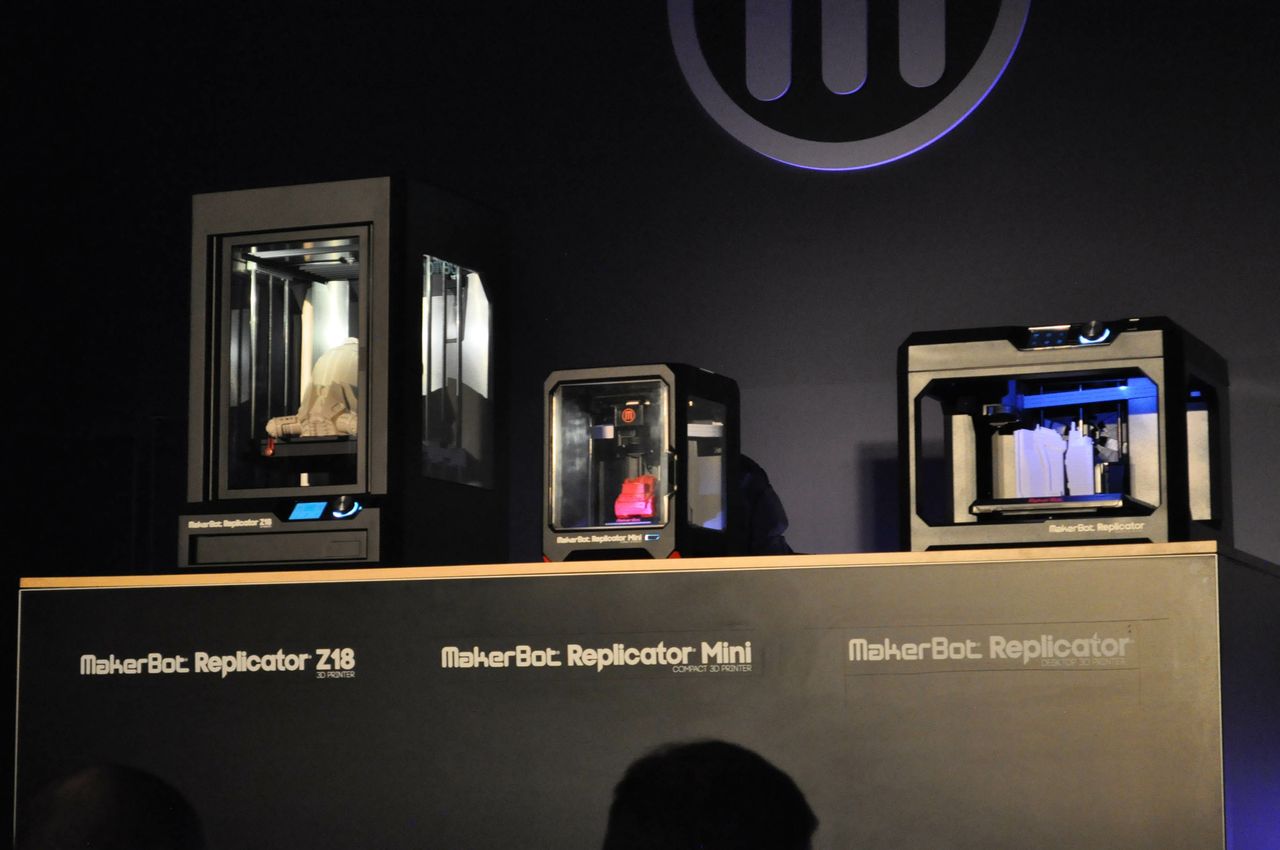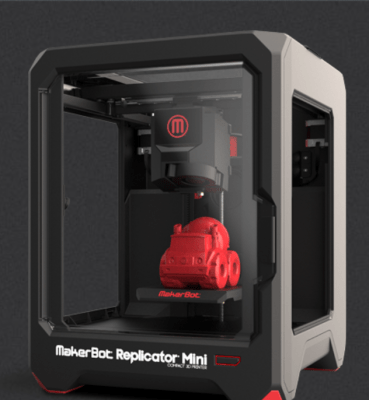It was an inauspicious beginning. At the MakerBot event last night at CES 2014 the intro music tended towards soft hard rock. On the plate was a lilting guitar anthem by the Foo Fighters and then a song by Incubus, Pardon Me.
So pardon me while I burst into flames.
Luckily, nothing did.
Instead, as I sat in the audience last night, I was struck just how exciting the proceedings were. Bre Pettis, CEO and a former school teacher, came out coughing, saying “Cool,” dressed in black like a nerdy Johnny Cash. He had a lot to say and his presentation was, in some strange way, a near-perfect facsimile of an Apple keynote: the amazing stuff the company is doing (3D-printed hands, soccer balls that students in the third world kick around and then use to light their homes at night), the retail spaces they’ve opened throughout the Northeast. The sales, the total employees, the dross that borders on self promotion but is a necessary part of the CE dance.
Then there was some information on their MakerBot Academy, an effort to push MakerBots into every classroom. “My parents bought me an Apple II+,” said Pettis, comparing his plans to another major hardware player that pushed their product into classrooms before the business world knew what was happening.
Arguably, the home PC market and the home 3D printer markets are, in a way, opposed. Home computers can do anything while 3D printers can only make anything. However, 3D printers allow for the imagination to run rampant. By creating things out of thin air they are a high-tech magic wand, a technology that allows us to hack the physical world in the same way Apple II users hacked the digital.

MakerBot products do two things right: first, they mirror the best practices of the CE giants. They are simple, easy-to-use, and offer intuitive, free software solutions. The segmentation of the products into Mini (for everyone), the Replicator (for the prosumer), and the ultra-large Z18 (for the small manufacturing shop) is spot-on and the trade dress – the sexy design, the cartridge-like filament holders, and the removable extruders move the 3D printer from a wonky, home-brew object of nerd veneration to a usable product that anyone with a rudimentary understanding of coffee makers can use.
MakerBot also owns the conversation when it comes to 3D printers. While the tinkerers online scream “Sell-out!”, Pettis is defining the face of 3D printing for the world. Through branding, design, and enough open source software and hardware to remain dangerous, he is selling a world where 3D printers are as ubiquitous as samurai swords were in Kill Bill – familiar tools that everyone has and everyone understands but few can use with precision or effect.
I’m a proponent of 3D printing, as you well know. I’ve owned a MakerBot for a few years now and it’s changed the way I think of how things are built and expanded my skill set in the way my original Atari 800XL all those years ago taught me that computers weren’t scary, and that they could be a source of pleasure and a true calling. A company that changes the world at CES is a rare treat. Everything else at this circus is a sideshow. MakerBot is the real deal.
